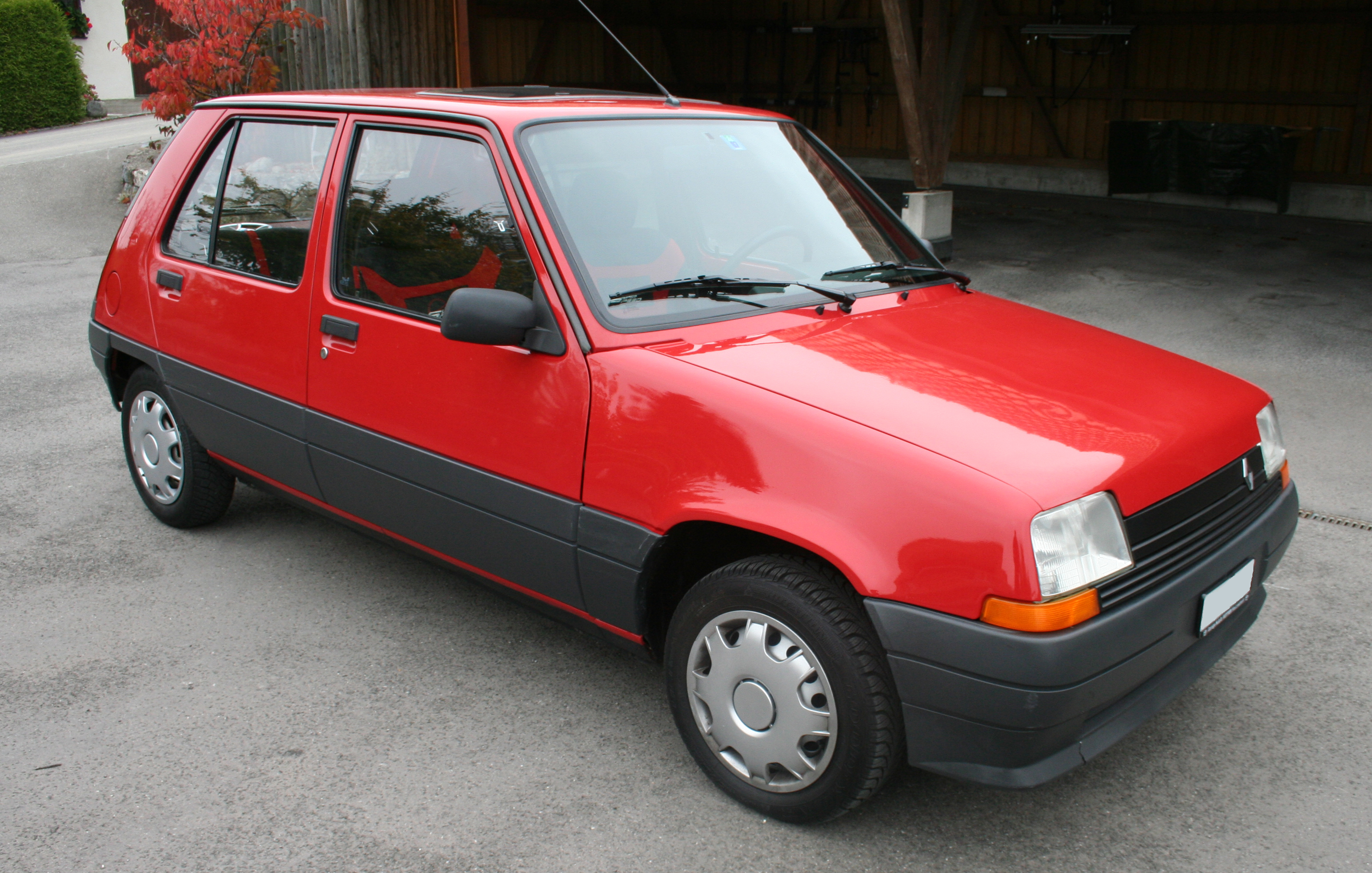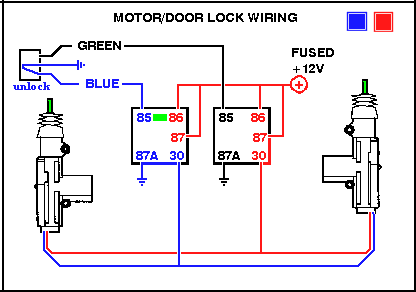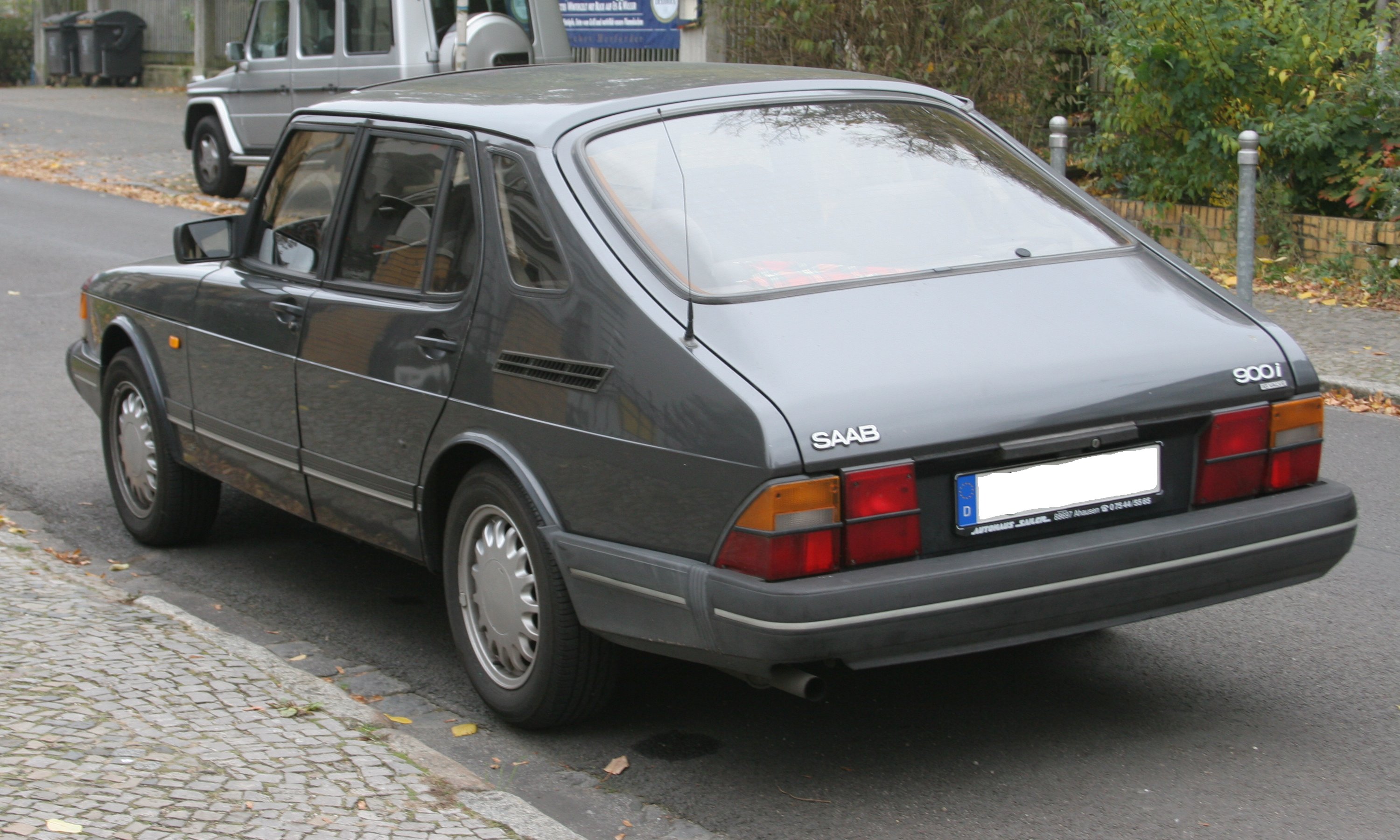|
Renault Extra
The Renault Express is a panel van of the French automobile manufacturer Renault, which in July 1985 succeeded the R4 Fourgonette in the market. It was based on the second generation Renault 5. It was commercialised in some European countries as the Renault Extra (United Kingdom and Ireland), Renault Rapid (mainly German-speaking countries) or Renault Express (in France, Spain, Austria, Switzerland, Italy, Japan, Taiwan). From 1996 to 2002, the Express was produced for South America at Nordex in Uruguay. Structure Technically, the Express was based on the second generation of the Renault 5 to which it is identical, except for a few stylistic changes, back to the A-pillar. It also uses the shorter front doors of the 5-door car. Special features of the Express compared to the Renault 5 were the lengthened wheelbase by about 15cm, the raised roof over the driver's cab and the box structure behind the B-pillar. The vehicle came as a non or partially glazed panel van version ... [...More Info...] [...Related Items...] OR: [Wikipedia] [Google] [Baidu] |
Renault
Groupe Renault ( , , , also known as the Renault Group in English; legally Renault S.A.) is a French multinational automobile manufacturer established in 1899. The company produces a range of cars and vans, and in the past has manufactured trucks, tractors, tanks, buses/coaches, aircraft and aircraft engines, and autorail vehicles. According to the Organisation Internationale des Constructeurs d'Automobiles, in 2016 Renault was the ninth biggest automaker in the world by production volume. By 2017, the Renault–Nissan–Mitsubishi Alliance had become the world's biggest seller of light vehicles. Headquartered in Boulogne-Billancourt, near Paris, the Renault group is made up of the namesake Renault marque and subsidiaries, Alpine, Renault Sport ( Gordini), Automobile Dacia from Romania, and Renault Samsung Motors from South Korea. Renault has a 43.4% stake with several votes in Nissan of Japan, and used to have a 1.55% stake in Daimler AG of Germany, it was sol ... [...More Info...] [...Related Items...] OR: [Wikipedia] [Google] [Baidu] |
A-pillar
The pillars on a car with permanent roof body style (such as four-door sedans) are the vertical or nearly vertical supports of its window area or greenhouse—designated respectively as the ''A, B, C'' and (in larger cars such as 4-door station wagons and sport utility vehicles) ''D-pillar,'' moving from front to rear, in profile view. Nomenclature Car pillars are components that support the structure of an enclosed automobile body. This is similar to that of a house with pillars supporting the roof over the floor. Car pillars are designed to stand in near vertical or inclined positions to support the roof. The consistent alphabetical designation of a car's pillars provides a common reference for design discussion and critical communication. This is used by insurance companies to identify damaged components and rescue teams employ pillar nomenclature to facilitate communication when cutting wrecked vehicles, as when using the jaws of life. The A-pillars on each side o ... [...More Info...] [...Related Items...] OR: [Wikipedia] [Google] [Baidu] |
Renault Vehicles
This is a list of vehicles badged as Renault. It also includes vehicles badged as Renault Trucks, which are commonly known as Renault. Current models Historic models Pre–World War I To World War I (1899–1918) *Voiturette (Type A/Type B/Type C/Type D/Type E/Type G/Type H/Type J) (1899–1903) * 8CV (Type L/Type M/Type Z/Type AJ/Type AL/Type AN/ Type AX) (1902–1914) ** 7CV (Type R/Type T) (1903–1904) ** 14CV (Type N (a)/Type N (b)/Type U (b)/Type U (c)/Type U (d)/Type X/Type AB/Type BX/Type CC/Type DJ) (1903–1914) *** 10CV (Type N (c)/Type Q/Type U (a)/Type U (e)/ Type Y/Type AH/Type AM/Type BK/ Type GS/Type IC/Type IG/Type II/Type IM/Type JR) (1903–1923) (Was facelifted as the Renault KZ in 1923) *** 20CV (Type S/Type V/Type AS/Type BY/Type BM/Type CE/Type CH/Type DX/Type EI/Type EJ) (1903–1919) **** 18CV (Type BF/Type CD/Type ED/Type FE/Type FS/Type GR/Type GV/Type HG/Type IQ/Type JS/Type JY/Type KD/Type MG/Type PI/Type PZ) (1909–1928) ***** 22CV (Type DO/T ... [...More Info...] [...Related Items...] OR: [Wikipedia] [Google] [Baidu] |
Renault F-Type Engine
F Renault engine (F for ''fonte'', French for cast iron) is an automotive internal combustion engine, four-stroke, inline-four engine bored directly into the iron block, water cooled, with overhead camshaft driven by a timing belt, and with an aluminum cylinder head, developed and produced by Renault in the early '80s, making its appearance on the Renault 9 and 11. This engine is available in petrol and diesel versions, with 8 or 16 valves. History In December 1982, the Renault Board proposed a new diesel engine with for the Renault 9. Known as "F8M", the new engine was designed by engineer George Douin and his team and broke with tradition by featuring no removable cylinder liners, thanks to advances in metals technology that significantly slow the wear of rubbing mechanical parts. The new 4- cylinder unit adopted an overhead camshaft driven by a toothed belt that also controls the diesel injection pump. A second belt rotates the alternator and water pump, while a vacuu ... [...More Info...] [...Related Items...] OR: [Wikipedia] [Google] [Baidu] |
Central Locking
Power door locks (also known as electric door locks or central locking) allow the driver or front passenger to simultaneously lock or unlock all the doors of an automobile or truck, by pressing a button or flipping a switch. Power door locks were introduced on the luxury Scripps-Booth in 1914, but were not common on luxury cars until Packard reintroduced them in 1956. Nearly every car model today offers this feature as at least optional equipment. Early systems locked and unlocked only the car doors. Many cars today also feature systems which can unlock such things as the luggage compartment or fuel filler cap door. It is also common on modern cars for the locks to activate automatically when the car is put into gear or reaches a certain speed. Remote and handsfree In 1980, Ford Motor Company introduced an external keypad-type keyless entry system, wherein the driver entered a numeric combination —either pre-programmed at the factory or one programmed by the owner— to u ... [...More Info...] [...Related Items...] OR: [Wikipedia] [Google] [Baidu] |
Renault Clio
The Renault Clio () is a supermini car ( B-segment), produced by French automobile manufacturer Renault. It was launched in 1990, and entered its fifth generation in 2019. The Clio has had substantial critical and commercial success, being consistently one of Europe's top-selling cars since its launch, and it is largely credited with restoring Renault's reputation and stature after a difficult second half of the 1980s. The Clio is one of only two cars, the other being the Volkswagen Golf, to have been voted European Car of the Year twice, in 1991 and 2006. The car is named after Clio, one of the nine Muses in Greek mythology. In Japan, it is sold as the Renault Lutecia because Honda retains the rights to the name Clio after establishing the '' Honda Clio'' sales channel in 1984. Lutecia is derived from the name of '' Lutetia'', an ancient Roman city that was the predecessor of Paris. The Renault Lutecia was formerly available through Yanase Co., Ltd., but in 1999 Renault purc ... [...More Info...] [...Related Items...] OR: [Wikipedia] [Google] [Baidu] |
Opel Combo
The Opel Combo is a panel van and leisure activity vehicle from the German automaker Opel. The Combo first appeared in 1993, a second generation model was introduced in 2001, and the third was manufactured from December 2011 to December 2017, based on the Fiat Doblò. The name "Combo" was previously applied as a suffix to a three-door panel van body style of Opel Kadett E from 1986 until 1993. Opel/Vauxhall joined Groupe PSA in March 2017: the fourth generation Combo, launched in March 2018, shares the platform and bodywork of the Peugeot Rifter and Partner, as well as the Citroën Berlingo. The Combo B and Combo C share platforms, vital components and some body panels with contemporary subcompact Opel Corsas, which used to be a typical pedigree for such a vehicle. The generations are denoted ''B'' and ''C'' in typical Opel fashion, but Holden applied the codes ''SB'' and ''XC'' respectively, reflecting the relation with SB and XC Holden Barinas (Opel Corsa B and C, respect ... [...More Info...] [...Related Items...] OR: [Wikipedia] [Google] [Baidu] |
Volkswagen Caddy
The Volkswagen Caddy is a panel van and leisure activity vehicle (M-segment) produced by the German automaker Volkswagen Group since 1980. It is sold in Europe and in other markets around the world. The Volkswagen Caddy was first introduced in North America in 1980 and in Europe in 1982. The first and second generations also had pick-up ( coupe utility) variants. The following vehicles are related to the Volkswagen Caddy and are also manufactured by the Volkswagen Group. *''Typ'' 14 was derived from the Volkswagen Golf Mk1, *''Typ'' 9K was derived from the Volkswagen Polo Mk3 (Volkswagen Caddy) / SEAT Ibiza Mk2 (SEAT Inca) platform, *''Typ'' 9U was rebadged Škoda Felicia pickup, *''Typ'' 2K was derived from the Volkswagen Touran platform with Golf Mk5 front suspension, *''Typ'' SB was rebadged for the third generation of the Ford Tourneo Connect since 2021. First generation (''Typ'' 14; 1979) Released in 1979, the first Volkswagen Caddy is a coupe utility and van based on ... [...More Info...] [...Related Items...] OR: [Wikipedia] [Google] [Baidu] |
MacPherson Strut
The MacPherson strut is a type of automotive suspension system that uses the top of a telescopic damper as the upper steering pivot. It is widely used in the front suspension of modern vehicles, and is named for American automotive engineer Earle S. MacPherson, who invented and developed the design. History Earle S. MacPherson was appointed the chief engineer of Chevrolet's Light Car project in 1945. He was tasked with developing a new, smaller car for the immediate post-war market, an effort that led to the Chevrolet Cadet. The Cadet was poised to be a groundbreaking vehicle, and the three prototypes that had been built by 1946 displayed a wide range of innovations. One of these was a revolutionary new independent suspension system that featured what is now known as MacPherson strut. The Cadet was slated to be the first production vehicle with MacPherson struts, but the project was cancelled in 1947 and never saw commercial production. This was in large part due to GM's conce ... [...More Info...] [...Related Items...] OR: [Wikipedia] [Google] [Baidu] |
Pickup Truck
A pickup truck or pickup is a light-duty truck that has an enclosed cabin, and a back end made up of a cargo bed that is enclosed by three low walls with no roof (this cargo bed back end sometimes consists of a tailgate and removable covering). In Australia and New Zealand, both pickups and coupé utilities are called utes, short for utility vehicle. In South Africa, people of all language groups use the term ''bakkie'', a diminutive of ''bak'', Afrikaans for "basket". Once a work or farming tool with few creature comforts, in the 1950s U.S. consumers began purchasing pickups for lifestyle reasons, and by the 1990s, less than 15% of owners reported use in work as the pickup truck's primary purpose. In North America, the pickup is mostly used as a passenger car and accounts for about 18% of total vehicles sold in the United States. Full-sized pickups and SUVs are an important source of revenue for major car manufacturers such as GM, Ford, and Stellantis, accounting for mor ... [...More Info...] [...Related Items...] OR: [Wikipedia] [Google] [Baidu] |
Combi Coupé
Combi coupé is a marketing term used by Saab to describe cars with a sloping coupé-like rear hatchback. The term joins the European term "combi" (for an estate car / station wagon) with coupé. The design combines the functionality of a hatchback with the appearance of a fastback. As per a hatchback, the combi coupé incorporates a shared passenger and cargo space. Origin The term was coined by Björn Envall and first introduced with the 1974 Saab 99. Saab also discussed making a hatchback available for the Saab 96/Saab 95 model range and Envall created the prototype Saab 98. The "Combi coupé" term was later applied to the Saab 900 model line-up. Volvo also made a prototype combi coupé. File:1978 Saab 99 3-door (US), front right.jpg , Saab 99 - front File:1978 Saab 99 3 door, rear left.jpg , Saab 99 - rear Modern examples At the 2010 Paris Motor Show, Saab showed models that indicated that the Saab 9-3 The Saab 9-3 (pronounced ''nine-three'') is a compa ... [...More Info...] [...Related Items...] OR: [Wikipedia] [Google] [Baidu] |
B-pillar
The pillars on a car with permanent roof body style (such as four-door Sedan (automobile), sedans) are the vertical or nearly vertical supports of its window area or Greenhouse (automotive), greenhouse—designated respectively as the ''A, B, C'' and (in larger cars such as 4-door station wagons and sport utility vehicles) ''D-pillar,'' moving from front to rear, in profile view. Nomenclature Car pillars are components that support the structure of an enclosed automobile body. This is similar to that of a house with pillars supporting the roof over the floor. Car pillars are designed to stand in near vertical or inclined positions to support the roof. The consistent alphabetical designation of a car's pillars provides a common reference for design discussion and critical communication. This is used by insurance companies to identify damaged components and heavy rescue vehicle, rescue teams employ pillar nomenclature to facilitate communication when cutting wrecked vehicles, ... [...More Info...] [...Related Items...] OR: [Wikipedia] [Google] [Baidu] |




_utility_(27473696625).jpg)


